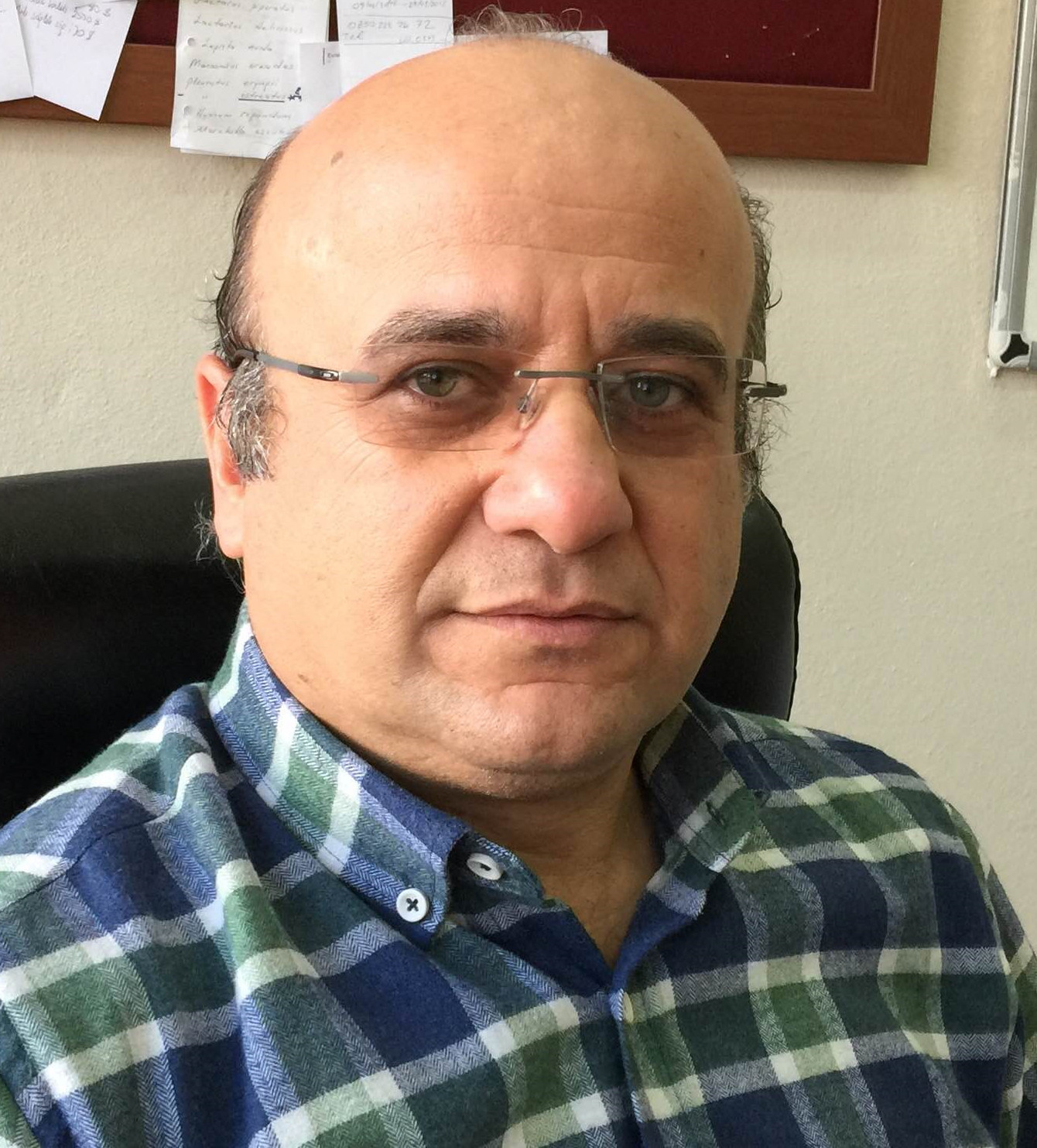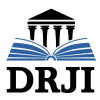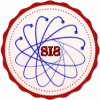Research Article
Aim & Scope
Aim of IJCT
Our aim is to publish original papers in aforementioned fields and to provide a platform for the scientists, researchers, and readers.
Scope of IJCT
International Journal of Chemistry and Technology (IJCT) accepts original research studies with regard to all scopes of physical chemistry, organic chemistry, inorganic chemistry, analytical chemistry, biochemistry/medical biochemistry, phytochemistry, polymer chemistry, solid state chemistry, nanomaterials, materials, biomaterials and composite materials, theoretical chemistry, chemical engineering and technology, environmental engineering and technology, nanotechnology, and biotechnology.
IJCT is a peer-reviewed international journal, and publication language is English. IJCT publishes electronically in June and December twice a year. IJCT is open access for all researchers in the world. There is no charge of page.
Original research article, review, conference paper, short communication (i.e. short article), and letter to editor with regard to the scientific scope of the journal can be submitted to IJCT.
Author Guidelines
International Journal of Chemistry and Technology (IJCT)
(e-ISSN: 2602-277X)
Instructions for Authors
General Principles
1. All manuscripts must be submitted electronically using journal’s web address, http://dergipark.org.tr/ijct
2. The submitted articles must not be published elsewhere or sent for publication.
3. Corresponding author is mandatory to submit the copyright agreement form after the acceptance of the manuscript.
4. Double blind peer review process (i.e. the names and addresses of the authors are removed from the manuscript and the author names and affiliations do not appear) is conducted for the evaluation of a manuscript submitted to IJCT. At the same time, the referees and authors do not know each other's names. Peer review process is as follows:
A manuscript submitted to IJCT is sent primarily to spelling and grammar editors for pre-check. If it will be required any correction, the manuscript is sent to corresponding author, again. After the revision of pre-control, the manuscript is sent to two referees for scientific evaluation. According to the opinions of the referees, an editorial decision is given. In the case of different of two referee's opinions, the manuscript is send to a 3rd referee. If the editorial suggestions about the manuscript are also present, they can be sent to corresponding author besides referee's reports.
5. After a manuscript accepted, a galley proof for corrections is sent to the corresponding author by IJCT.
6. IThendicate software, a plagiarism checking system is used to determine the similarity index for submitted manuscripts
7. ISI Web of Science abbreviations for journal's titles are used.
8. ACS (American Chemical Society) reference styles are used in the text and references list.
9. Authors should specify that there is no conflict of interest with any person, institution, company, service providers, etc. by considering 'International Committee of Medicinal Journal Editors (ICMJE)'s recommendation.
10. For works required ethical committee report, the authors should submit Ethics committee report by considering the suggestions of 'Committee on Publication Ethics (COPE)'.
11. All authors must give their ORCID numbers.
12. Four word files should be loaded during manuscript submission. 1. Title page (Title of manuscript, Author name and surname, Affiliations, Orcid numbers of all authors, Corresponding author email address). 2. The main document of the manuscript (Title of manuscript, Abstract, Keywords, Introductions, Materials and Methods, Results and Discussion, Conclusions, Acknowledgements, Conflict of interests, References). 3. Copyright Agreement Form. 4. Statement indicating the originality of the work.
Preparation of Manuscript
General points
- Font throughout the text should be Times New Roman, 10 font size, and double space. Only title of manuscript must be 14 font size.
- Manuscript must be submitted as a word file (as a full text including Figures and Tables), not pdf file. Figures and Tables mudt be given sequentially on a separate page after the references section. The place of figure and table should be specified in the text.
- Page spaces should be in 2 cm for the left and right, 3 cm for top and bottom. Each paragraph must start separately, not inside.
- Page numbers must be given under page as centered. It should be 9 font size.
- Continious line numbers for all pages must be given at the left of the page.
- ACS (American Chemical Society) styles for the references must be used.
- ISI Web of Science abbreviation for journal's titles must be used (https://images.webofknowledge.com/images/help/WOS/C_abrvjt.html).
- The international system of units (SI) must be used. For example, Units should be written as follows:
mg g-1, mg l-1, l , ml , J mol-1, J mol-1 K-1, mol l-1, min-1, mol2 J-2, t1/2, min.
- The symbols must be received from symbol menu of word. A space must given after each symbol and sign.
- The words 'Figure’ and ‘Table’ should not be shortened in the text.
- Figures and Tables should have high quality.
- The figures, tables, and equations should be numbered according to their sequence in the text.
- Each symbol in the equation should be given in italics in the text.
- Edge line thickness of axes of graphs and diagrams besides table lines should be drawn as 1/2.
- The manuscript must be checked continuously by means of spelling and grammar programs of the computer.
- Latin and Persian words such as fungi, yeast, plant names, should be written in italics in the text.
The essential title page information
Title: Title must be reflected well the aim of the study, not be used abbreviation and formulae.
Author names: Name (s) and family name (s) of each author must be given fully. Name must small, and surname must be capitalized.
Orcid numbers: Orcid numbers of all authors should be given in the order of names.
Affiliation address: Authors' affiliation addresses should be written in order department, faculty, university, post code, city, and country, in italic form.
Abstract: The abstract should include up to 170 words. It should reflect the purpose of the research, the principal and important results. It should not include reference and abbreviations.
Keywords: The number of keywords should be between 3 and 5. Phrases such as 'and', 'or' should not be used.
Corresponding author: The corresponding author should be shown with an upperscript using an asteriks. And also, after keywords, telephone and fax numbers, and e-mail address should be given, respectively.
Introduction: The introduction should specify the objectives of the study and provide an adequate background. Literature studies related to the subject should be included.
Materials and Methods: In this section, all materials used should be expressed. Also, the experimental and theoretical methods should be described clearly, supporting references.
Results and Discussion: Results should be clear and concise. The significance of the results of the work should be discussed, and interpreted. The suitability of the results obtained should be supported by literature.
Conclusions: The main conclusions of the work should be presented in short. They may form a subsection of 'Results and Discussion' section. The results should not repeat.
Acknowledgements: Herein, it is necessary to thank for the persons and organizations helping during the study.
Conflict of Interest: Authors should specify that there is no conflict of interest with any person, institution, company, etc.
References: ACS (American Chemical Society) style is preferred for references. According to ACS, styles in both the text and the references list are given in the following. Please write your references according to the ACS style.
Authors are responsible for the accuracy and completeness of all references.
Styles in the Text
References should be given with number as uppercript in the text. The various examples are given below.
For example:
· Oscillation in the reaction of benzaldehyde with oxygen was reported previously.1
· Similar results have been reported by Ho and McKay.2,3,17
· Jensen4 reported oscillation in the reaction of benzaldehyde with oxygen.
· The syntheses described by Fraser5 take advantage of carbohydrate topology.
· According to Harris6 drug release is controlled by varying the hydrolytic stability of the ester bond.
· Gündoğan and co-workers7 studied the adsorption of copper (II) ions onto peat.
· Yang and Volesky8 studied the biosorption of uranium on Sargassum biomass.
· Many low-cost adsorbent such as clay9-11, zeolite12,13, perlite14-16,21 have been used to remove undesired pollution.
Note: Reference numbers should be blue colored in the text
Style for Reference List
Please use ISI Web of Science abbreviations for Journal titles
For a journal publication;
1. Mawhinney, R.C.; Muchall, H.M.; Peslherbe, G.H. Can. J. Chem. 2005, 35, 1615-1625.
2. Klingler, J. Chem. Mater. 2005, 17, 2755–2768.
For Books;
Lehman, J. W. Operational organic chemistry: a problem-solving approach to the laboratory course, 4th ed.; Pearson Prentice Hall: Upper Saddle River, N.J., USA, 2009.
For Book Chapter;
Nishiyama, H.; Shiomi, T. Reductive Aldol, Michael, and Mannich Reactions. In Metal Catalyzed Reductive C-C Bond Formation : A Departure from Preformed Organometallic Reagents; Krische, M. J., Ed.; Springer: Berlin, 2007; pp 105-138.
For Meeting or conference;
Garrone, E.; Ugliengo, P. In Structure and Reactivity of Surfaces, Proceedings of the European Conference, Trieste, Italy, Sept 13–20, 1988; Zecchina, A., Cost, G., Morterra, C., Eds.; Elsevier: Amsterdam, 1988.
For Patents;
Sheem, S. K. Low-Cost Fiber Optic Pressure Sensor. U.S. Patent 6, 738, 537, May 18, 2004.
Lenssen, K. C.; Jantscheff, P.; Kiedrowski, G.; Massing U. Cationic Lipids with Serine Backbone for Transfecting Biological Molecules. Eur. Pat. Appl. 1457483, 2004.
For Handbooks;
CRC Handbook of Chemistry and Physics, 89th ed.; Lide, D.R., Ed.; CRC Press: Boca Raton, FL, 2008; Section 3, No. 339.
The Merck Index: An Encyclopedia of Chemicals, Drugs, and Biologicals, 12th ed.; Budavari, S.; O'Neal, M.J.; Smith, A.; Heckelman, P. E.; Kinneary, J. F., Eds.; Merck & Co.: Whitehouse Station, NJ, 1996; entry 4857.
For Theses & Dissertations;
Chandrakanth, J. S. Effects of Ozone on the Colloidal Stability of Particles Coated with Natural Organic Matter. Ph.D. Dissertation, University of Colorado, Boulder, CO, 1994.
Online
Devanathan, G. The design of substrates for Cathepsin X. Masters Thesis [Online], Concordia University, Montreal, QC, 2003. http://spectrum.library.concordia.ca/2239/ (accessed June 14, 2010).
For Web Sites;
Alkaloid, 2009. HowStuffWorks.com. http://science.howstuffworks.com/alkaloid-info.htm (accessed June 14, 2010).
Zeng, Y. Pentachlorophenol Family Pathway Map, 2008. University of Minnesota Biocatalysis/Biodegradation Database.http://umbbd.msi.umn.edu/pcp/pcp_map.html (accessed May 3, 2009).
Cancer Research UK, Cancer statistics reports for the UK.
http://www.cancerresearchuk.org aboutcancer/statistics/cancerstatsreport/,
2003 (accessed 13.03.03).
For Other Online Sources;
General Web sites
ACS Publications Division Home Page. http://pubs.acs.org (accessed Nov 7, 2004).
Electronic lists and newsgroups
Chemical Information List Server, CHMINF-L@iubvm.ucs. indiana.edu (accessed Oct 13, 2004).
Computational Chemistry List, solvent discussion in archived messages of September 2003, chemistry@ccl.net (accessed Nov 10, 2004).
Electronic mail messages
Solla, L. R. Cornell University, Ithaca, NY. Personal communication, 2005.
Figures: Please copy excel forms of figures and paste them into the word file. Do not give them as photo. Give the figures in colored. Caption of each figure should be under the figure. Figures should be given on a separate page at the end of the paper. Place of the figure should be marked in the text. Figure caption list should be given on a separate page at the end of the text. All symbols and abbreviations used in figure should be explained in the caption of the figure. The word ‘figure’ should not be shorted in the text and on figure caption. The word ‘Figure’ should be given in blue color in the text. Only ‘Figure’ word at figure caption should be bold. All of figure caption should be 9 font size. A dot must be placed after figure caption. Numbers, symbols, signs, and letters within figure should be 8 or 9 font size. Axes titles of figures should be normal (not bold) +Gövde character and 10 font size. Axes numbers of figures should be normal (not bold) +Gövde character and 9 font size. Numbers, symbols, signs, and letters within the x and y axes of figures should be 8 or 9 font size. Graphs and diagrams must be drawn with a 0.5 line weight. The size of the shapes must be the same size in width and height as possible.
For example;
Figure 1. Surface morphology of adsorbent: a) before adsorption, b) after adsorption.
Tables: All tables must be constructed using the Word's ‘Create Table’. Caption of each table should be over the table. Tables should be given on a separate page at the end of the paper. Place of table should be marked in the text. Table caption list should be given on a separate page at the end of the text. Footnotes, if necessary, can be used under the table with a small font size. The word ‘Table’ should not be shorted in the text and on table caption. The word ‘Table’ should be blue colored in the text. Only ‘Table’ word on table caption should be bold. All of table caption should be 9 font size. All edge lines of the tables should be in 1/2 width. Only main titles and subheadings within table should be bold, is not the others. Numbers, symbols, signs, and letters within table should be 8 or 9 font size.
For example;
Table 1. Kinetic data of the adsorption of metal ions by organic clay at different temperatures
Ethical Principles and Publication Policy
Ethical Rules and Committee Permission
1. Tasks of the Editors
• The editor of the journal is solely and independently responsible for deciding on the publication conditions of the submitted article. Before reaching the final decision, the validity, importance and novelty of the article uploaded to the journal should always be considered.
• The editor and field editors follow the principles of the editorial board of the journal and evaluate issues such as copyright infringement and plagiarism in line with these principles. The editor may also collaborate with field editors or reviewers to take the final decision.
• The editor and field editors are responsible for the equal, fair and timely completion of the evaluation process through expert reviewers in the relevant field. Unless an additional reviewer is needed, editor or field editor ensures that the article submitted to the journal is evaluated by at least two external and independent reviewers.
• Articles should be evaluated by the editor or field editor according to their content and novelty, without considering the race, gender, sexual orientation, religious belief, ethnicity, citizenship or political philosophies of the authors.
• The publication policies of the journal should be clear and include open reports from reviewers and authors. In addition, the editor and field editors should use the journal standard electronic system for all journal communications, with the exception of any technical problems.
• The editor will use a clear statement process in appealing editorial decisions.
• The editor should not attempt to influence the ranking of the journal and should not compel authors to include articles by the editor's or field editors unless there are sound scientific reasons for this purpose.
• The confidentiality of all articles submitted to the journal, communications with interested parties, and the identity of the reviewers should be protected by the editor and field editor.
• Unpublished materials, information and ideas contained in the submitted article should not be used in the research of the editor or field editor without the written consent of the author.
• The publisher must be notified of any potential editorial conflicts of interest. The publisher may publish the related notices in the journal.
• The editor or field editor should not make any decisions about articles written by relatives and colleagues. Such an application should be subject to the general procedures of the journal and this process should be done without including the relevant author/editor and research groups.
• The editor must maintain the integrity of the published record by investigating suspected abuse.
• In case of doubt, if necessary, the editor should contact the article author and inform to author about the relevant requests. However, in such a case, the editor should also be able to communicate with relevant institutions and research centers.
• In the case of plagiarism, the editor must act with the publisher and ensure that the correction, retraction or explanatory statement is promptly published.
2. Task of Reviewers
• During the peer-review process, the reviewers are expected to pay attention to the ethical issues mentioned above and to consider the article objectively.
• If the subject of the article is not related to the reviewer' field or if the reviewer will not be able to evaluate the article in a timely, the reviewer is expected to reject the evaluation process and inform to the editor immediately.
• All articles submitted to the International Journal of Chemistry and Technology are confidential. Reviewers should also not share any review or information about the article with anyone. In addition, reviewers should not communicate with authors without permission from the editor.
• Information or ideas presented in the reviewed article should not be used for the personal benefit of the reviewers.
• The review should be constructive, and attention should be paid to ethical issues such as plagiarism.
• Comments should be objective and supported by arguments that do not include any personal criticism.
• In case of any potential conflict of interest, the reviewer should warn the editor or field editor and refuse to evaluate the article.
• The recommendation of the reviewer and/or reviewers (or their partners) appointed to evaluate the article to refer to their work must be scientifically reasonable without the reviewer's intention to increase the number of citations.
3. Tasks of Authors
• Authors submitting a research article or a short communication article to the journal should ensure that the article contains original results and discussions that highlight the importance of the work. If the uploaded article is a review article or other type, the content of the manuscript must be concrete and objective.
• Articles submitted to the journal should contain sufficient references and should be written in detail.
• All sources of support for the study should be mentioned in the acknowledgment section of the article.
• Unethical issues such as plagiarism and controversial and false statements are never acceptable in the content of an article.
• An author should not submit the same article, in whole or in part, to more than one journal (other than an abstract or a published lecture or academic thesis, or an electronic edition). This type of behavior is unethical and is not accepted by the journal.
• Persons who do not contribute to the content intellectually during the creation of the work should not be specified as author.
• All studies submitted for publication, if any, situations that may constitute a conflict of interest and their relationships should be disclosed.
• To become a co-author, significant contributions must be made to the content, design and application areas of the article. Language editors or medical authors should be mentioned in the acknowledgments section.
• If the author(s) notices an inaccuracy or error in their published, in print or under evaluation work, they have the obligation to cooperate with the editor in the process of informing, correcting or withdrawing the journal editor or publisher.
• Changing the author responsibilities of a study whose evaluation process has begun (such as adding an author, changing the order of authors, removing an author) cannot be proposed.
• The corresponding author of the article is responsible for eligible and inappropriate co-authors. In addition, the corresponding author should obtain the relevant approvals from all co-authors for the final version of the article and the journal to which it was sent.
• All authors are responsible for all parts of the article.
• If the article involves the use of animal or human subjects, necessary documentation, such as the approval of appropriate institutional committees, and a corresponding statement should be provided to the journal by the author.
• Any significant errors noticed by the author should be reported to the editor immediately. In case of any correction, the author is obliged to provide the evidence requested by the editor or the field editor.
• Complex changes that will damage the originality such as enhancement, relocation, removal of any part are unacceptable for the images and pictures included in the article.
• The corresponding author is the authorized person on behalf of all authors. It is the corresponding author's duty to inform other author(s) about the manuscript process. The journal editorial board does not accept any responsibility for the conflict of interest between the author(s) whose article is accepted.
4. Actions Contrary to Scientific Research and Publication Ethics
Fake: Making up data as if it was done without a scientific research, to report or publish them.
Distortion: To falsify research records and obtained data, presenting the methods, devices and materials not used in the research as if they were used, not to evaluate the data that are not suitable for the research hypothesis, manipulate data and/or results to fit relevant theories and assumptions, to falsify or shape the research results in line with the interests of the people and organizations that receive support.
Plagiarism: Presenting the ideas, methods, data, practices, writings, figures or works of others as their own work, in whole or in part, without attribution in accordance with scientific rules.
Forgery: To produce data that is not based on research, to edit or modify the presented or published work based on untrue data, to report or publish them.
Re-publish (Duplication): Republishing the results of a study in another journal without the permission of the editor of the journal in which it was originally published.
Separating: Presenting the results of a research as separate works in the evaluations of associate professorship exams and academic promotions, by separating the integrity of the research, by separating it into parts inappropriately, and by making multiple publications without citing each other.
Unfair authorship: To include people who do not have an active contribution among the authors, not including people who have an active contribution among the authors, changing the order of authors unjustifiably and inappropriately, removing the names of those who contributed actively from the work during publication or in subsequent editions, to include his name among the authors by using his influence, although did not have an active contribution.
Other types of ethics violations: Not clearly stating the supporting persons, institutions or organizations and their contributions to the research in the publications of the research carried out with support, not respecting patient rights in their publications, to share the information contained in a work assigned to review as a referee, with others before it is published, to misuse the resources, places, facilities and devices provided or allocated for scientific research, to allege unfounded and deliberate ethical violations.
5. Ethics Committee Approval
TR Index Journal Evaluation Criteria has been updated for 2020.
An "Ethics Committee Approval" document is also required for studies that require ethics committee approval within current criteria. Therefore;
1. Ethics committee approval should be obtained separately for studies conducted in all branches of science, including social sciences, and for clinical and experimental studies on humans and animals that require an ethics committee decision, and this approval should be stated and documented in the article.
2. In studies that require ethics committee permission, information about the permission (name of the committee, date and number) should be included in the method section and also on the first/last page of the article. In case reports, information about signing the informed consent form should be included in the article.
In the statement made by the TR index, the studies in the following category were determined as articles that require Ethics Committee approval:
All kinds of research carried out with qualitative or quantitative approaches that require data collection from the participants by using survey, interview, focus group work, observation, experiment, interview techniques.
Use of humans and animals (including material/data) for experimental or other scientific purposes.
Clinical studies on humans.
Animal studies.
Retrospective studies in accordance with the personal data protection law.
Additionally;
Stating that an “informed consent form” was taken in case reports.
Obtaining and specifying permission from the owners for the use of scales, questionnaires, photographs belonging to others.
It should be noted that there are copyright regulations for the ideas and works of art used.
Journals should state that they comply with the rules regarding "Publication Ethics", "Research Ethics" and "Receiving Legal/Special Permission" by opening a separate heading for each one, by referring to international standards, both on the web page and in the printed journal.
The issue of compliance with publication ethics in journals should not be left to the sole responsibility of the authors, the path to be followed in journal publication ethics should be clearly defined.
In articles to be published in journals, whether ethical committee permission and/or legal/special permission is required should be stated in the article.
If it is necessary to obtain these permissions, it should be clearly presented from which institution, on what date and with what decision or issue number.
If the study requires the use of human and animal subjects, it should be declared that the study was carried out in accordance with the international declaration guideline.
6. ETHICS COMMITTEE PERMISSION
Dear authors and reviewers,
In line with the decisions taken by the ULAKBİM TR Index, "Ethics Committee Approval" must be obtained for research conducted in all branches of science, including Social Sciences, as of 2020. In studies that require ethics committee approval, information about the permission (name of the committee, date and number) should be included in the method section and also at the end of the article. When uploading your study to our journal, you must also upload your Ethics Committee document along with your article file. If your study is not included in the working group that requires ethics committee approval, you must sign the declaration form stating this situation and indicate the relevant situation in your article text.
Is ethics committee approval required for all articles?
No. Studies that require ethics committee approval are as follows:
All kinds of research conducted with qualitative or quantitative approaches that require data collection from the participants by using survey, interview, focus group work, observation, experiment, interview techniques.
Use of humans and animals (including material/data) for experimental or other scientific purposes,
Clinical studies on humans,
Animal studies,
Retrospective studies in accordance with the personal data protection law
Additionally;
Stating that an “informed consent form” was taken in case reports.
Obtaining and specifying permission from the owners for the use of scales, questionnaires, photographs belonging to others.
Should a retrospective Ethics Committee Permission be obtained for publications produced from studies and thesis completed in previous years?
Retrospective ethics committee approval is not required for articles that were published before 2020, produced from postgraduate/doctoral studies (must be specified in the article), submitted an application for publication to the journal in the previous year, and accepted but not yet published.
Are there any restrictions on publications made outside of universities with these rules of TR Directory? No. Non-university researchers can also apply to the Ethics Committees in their regions.
The authors of the articles in this scope to be sent to the International Journal of Chemistry and Technology must both upload the permission documents they have received to the system during their application and specify them in their articles. This information should be given at the end of the article before the bibliography as follows:
Ethics Committee Permission: Ethics committee approval for this study was obtained with the decision of the Ethics Committee dated .... and numbered .....
Price Policy
There is no article processing fee or any submission fee in the journal.
Indexes
Citation Indexes
Other Indexes
Journal Boards
Publisher
Editor in Chief

Editorial Team



Scientific Publication Board



Statistics editor

Language and spelling editor


Publication and Layout Editor
Spelling Editor

Secretary
This work is licensed under a Creative Commons Attribution-NonCommercial 4.0 International License.














